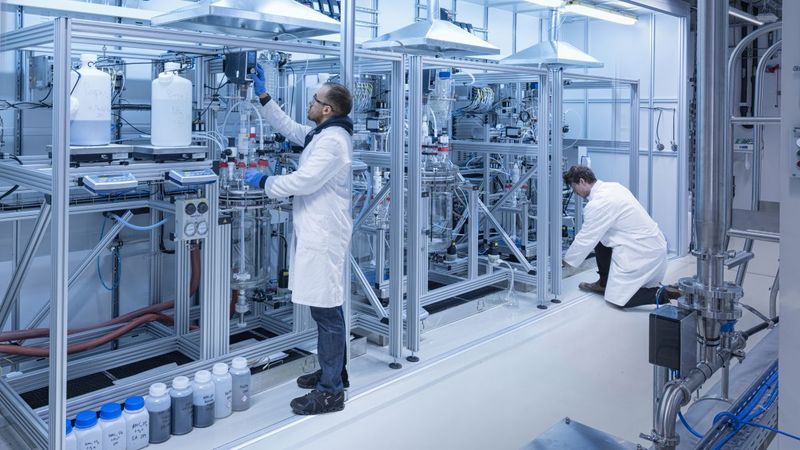Sodium-ion batteries on the way to application
KIT researchers are working together with partners on the industrial transfer of the pioneering sodium technology

KIT researchers are working on scalable manufacturing processes for the active materials in sodium-ion batteries. Credit: Amadeus Bramsiepe, KIT
This article was first published on
www.kit.eduCost-effective, safe and made from widely available raw materials - the advantages of sodium-ion batteries over today's ubiquitous lithium batteries are obvious. But despite similar electrical properties, lithium and sodium cannot simply be interchanged. Chemical differences between the elements currently still lead to technical challenges, such as the short lifespan of sodium batteries and scaling for large margins. In the SIB:DE FORSCHUNG (Sodium-Ion-Battery Germany Research) project , the Karlsruhe Institute of Technology (KIT) and 20 partners from science and industry are pooling their expertise to address remaining obstacles and enable a rapid transfer of sodium technology into industrial mass production.
Active materials and electrodes from KIT
"At KIT, we are working on scalable manufacturing processes for particularly high-performance active materials and are demonstrating production on a kilogram scale," says Professor Helmut Ehrenberg from the KIT's Institute of Applied Materials (IAM). "Being able to produce these cost-effectively and scalably is a crucial step for an industrial roll-out of sodium ion technology." Researchers at the Helmholtz Institute Ulm are also working on electrodes that they are optimizing for long-lasting battery performance. The results are then analyzed and tested in the BELLA (Battery and Electrochemistry Laboratory) research laboratory operated jointly by KIT and BASF.
About SIB:DE FORSCHUNG
In total, SIB:DE FORSCHUNG consists of 7 industrial partners and 14 academic partners as well as an expanded circle of currently 42 associated partners, making it the largest consortium in Germany on this topic. The Federal Ministry of Education and Research is funding the research with 14 million euros. KIT is the largest grant recipient with around 3.8 million euros, which is distributed between IAM, BELLA and the HIU. BASF coordinates SIB:DE FORSCHUNG.